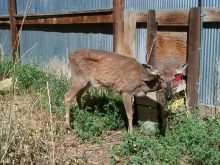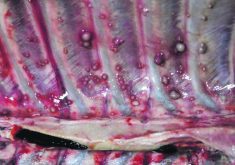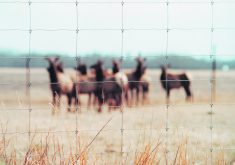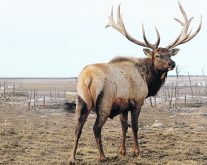With hunting season approaching and the spread of chronic wasting disease also accelerating on the Prairies, researchers are warning of the risks to human health.
Manitoba is the latest prairie province to report cases of CWD in late-2021 with five confirmed cases being discovered in the past year. Manitoba is warning of dire consequences for the entire cervid population if the issue is not addressed.
The first case in wild deer was found in Saskatchewan in 2000 with Alberta confirming its first case in 2005.
While CWD is a prion disease similar to BSE, Sabine Gilch, associate professor at the University of Calgary’s Faculty of Veterinary Medicine, said the risks of the disease transmitting to humans is likely greater than that to cattle.
Read Also

Saskatchewan puts crown land auction on hold
Auctions of Saskatchewan crown lease land are once again on hold.
In the latest research paper published last month on the topic of the potential inter-species transmission of CWD, researchers found it to be possible, in theory, for the disease to transmit to humans.
Gilch explained that while BSE is found in the brain and nervous system of cattle and spread by consumption of those parts of the animal, CWD is found throughout much of the body of cervids and is transmitted through saliva and excrement of infected deer and elk.
“What is concerning is we have a high load of infectious prions in muscles and basically the meat that hunters would eat,” she said. “So, it’s a big question whether CWD is transmissible to humans.”
Gilch said there is no evidence CWD has ever been transmitted to humans but lab research using genetically altered mice that mimic human physiology were infected with CWD from a white-tailed deer and that has shown the possibility exists.
“We found a very atypical form of the pathogen and it was also not consistently detectable with the current gold-standard methods that are used to detect prion diseases in humans,” she said.
CWD was also found to be transmissible between mice through feces, which Gilch called an “unprecedented finding.”
That result could have profound effects if the research in the lab plays out in the general population.
“If this happens in humans, it would be a source of human-to-human transmission of CWD,” said Gilch.
She said the barriers of inter-species transmission continues to be high and greater than the potential of BSE transmission to humans through the Creutzfeldt-Jakob variant of the prion disease.
These risks should provide an impetus for the development of a vaccine for the disease, said Gilch.
“This is the biggest push that is currently going on in Alberta and Saskatchewan. There is a lot of research going into vaccines against CWD and developing oral vaccines that can go into the wild population,” she said.
The universities of Calgary, Alberta and Saskatchewan are currently attempting to develop such a vaccine.
“It’s still problematic since prion diseases like CWD are very slow diseases which take a couple of years (to develop symptoms),” Gilch said, adding that even testing whether a vaccine works will take at least just as long. “Ten years from now, hopefully we have something we can work with in wild animals.”
But Gilch added the recent lab testing should be a wake-up call for more resources to be put towards finding a solution to tackling the spread of CWD.
“Because if CWD in humans turns out as we see it in our mouse models, in particular with this fecal shedding, if this happens in humans then you could have human-to-human transmission,” she said. “Then the case numbers would just go up and be much higher than we would anticipate if the occasional deer transmitted CWD to humans.”
In Alberta, according to the latest available numbers from 2019, nearly 10 percent of the more than 10,000 head of deer, elk and moose submitted by hunters for CWD testing were found to be positive for the disease.
In Saskatchewan, those numbers were 644 cases of CWD found from 3,300 head submissions.
Most cases in both provinces came from mule deer.


















